The “Linux Basics” mini-series provides basic knowledge of the various Unix-like operating systems based on the Linux operating system kernel in a simple and understandable way. It starts with the well-known large distributions, small and large derivatives and their numerous desktops and window managers.
Table of contents
- 1 Distributions, Derivatives and Desktops
- Large distributions and their derivatives
- Debian GNU/Linux
- Debian GNU/Linux: derivatives
- Ubuntu
- Ubuntu derivatives
- Arch Linux
- Arch derivatives
- Fedora
- Fedora derivatives
- Large and small desktop environments
- Comfortable desktops
- Lightweight window managers
- Recommendations
- < li> Three distributions for Linux beginners
- Three recommendations for ambitious users
- Four Linux for professionals and individualists
- SUSE, Fedora, Solus and Debian
- Do you use a Linux-based operating system?
Distributions, derivatives and desktops
With the end of Windows 7 (* 2009 to † 2020), the following question arises for more and more users: Does it always have to be Windows?
At the moment, gamers cannot always avoid Windows 10 and its designated successor Windows 11, but especially users who are usually on the move in the browser, handle private correspondence on their system or play music, Consuming pictures and videos will in many cases be happy with a preconfigured operating system – a so-called distribution – based on the Linux kernel.
Large distributions and their derivatives
It starts with the major Linux distributions, which helps users to get a rough overview of the no fewer than 275 derivatives currently listed in the DistroWatch ranking. Today's Linux landscape is primarily dominated by the popular distributions Debian GNU/Linux, Ubuntu, Arch Linux, Fedora and openSUSE as well as their offshoots – the so-called derivatives.
Debian GNU/Linux
Debian, also known as Debian GNU/Linux because of its origins, is a real veteran among the Linux distributions and is based on the basic system tools of the GNU project.
With over 59,000 software packages consisting of applications and tools, the operating system, which was first published on June 17, 1996, is not only one of the oldest and most successful distributions, but also the basis for countless other large distributions and their derivatives.
Debian is a very transparent distribution. For example, all program and security problems are publicly published and discussed in the Debian mailing lists. The security holes discovered in this way are published together with the associated risk assessment, which often means that these security holes can be closed within a few hours.
The development of Debian is divided into a total of three branches – which is reflected in the three versions (releases) of the distribution:
for new versions Debian 10 (“Buster”) Debian 11 (“Bullseye”) Debian (“Sid”) * * will not be released; Packages later go to testing and then to stable
Since 2000, a new stable release of Debian has appeared every two years, while its predecessor is continued as oldstable for at least one year. For this reason, Debian is particularly suitable for users who want a stable operating system and who do not always value the latest packages and software versions.
Gnome acts as the standard desktop of Debian GNU/Linux, but KDE Plasma 5 and other desktop environments are also available and can be – like all software packages – via the Debian Package Manager and install its graphical user interface APT.
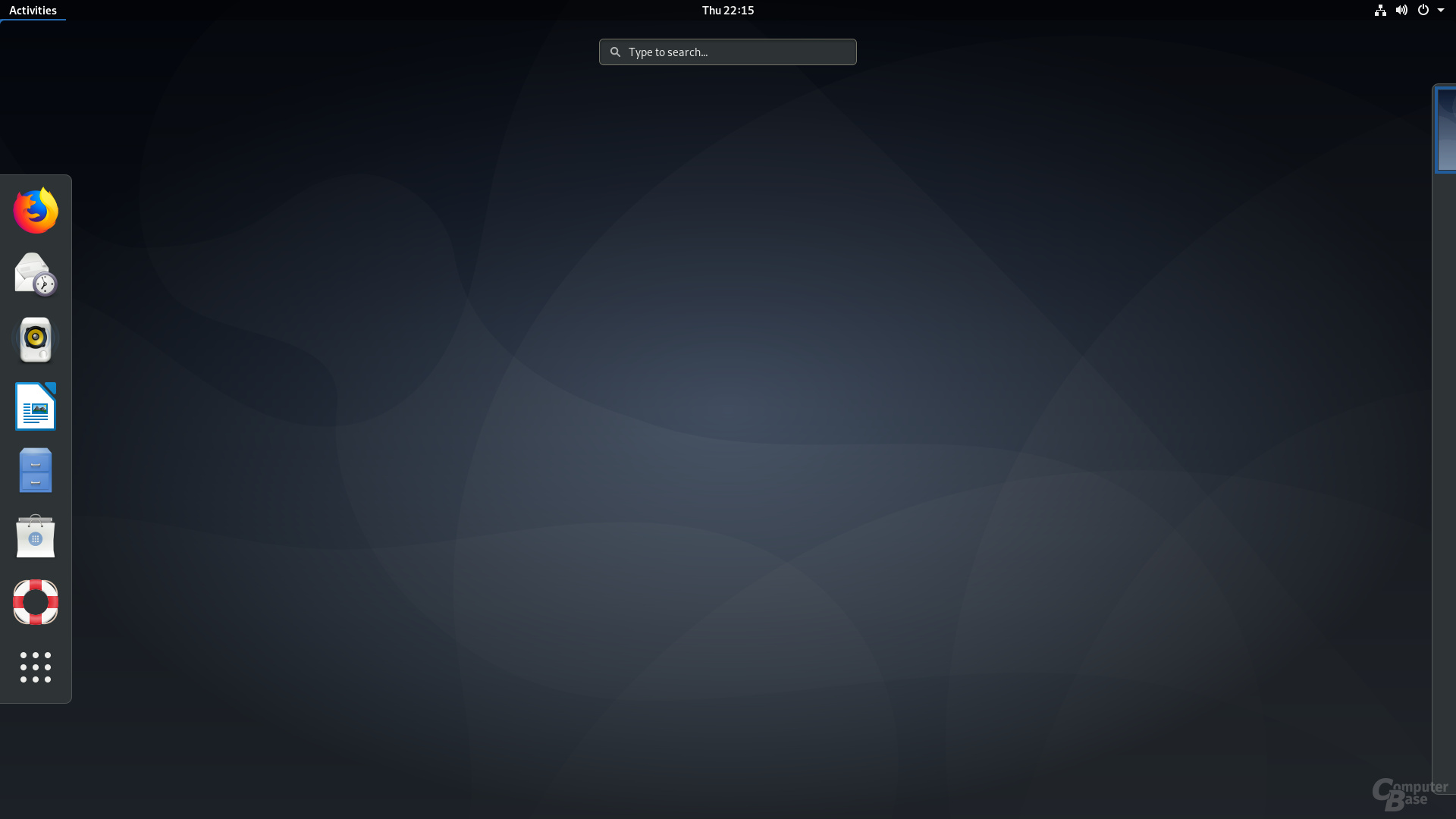 Debian 10 (“Buster “) With his standard desktop Gnome 3.30
Debian 10 (“Buster “) With his standard desktop Gnome 3.30 Debian GNU/Linux: Derivate
Debian GNU/Linux enjoys within the worldwide Linux community an excellent reputation – not least due to its stability and well-maintained repositories. A fact that other distributions that are based on Debian often take advantage of.
Canonical's Ubuntu operating system, for example, is also a so-called “derivative” of Debian GNU/Linux, but due to its size and influence, as well as the fact that the distribution has already produced its own derivatives, it has itself achieved a status that allows it To list Ubuntu and its derivatives separately.
Currently popular derivatives of Debian are the MX Linux, which is moderate in terms of resource consumption, the Debian fork Devuan, which manages without the controversial systemd service, the Chinese distribution Deepin, with its own desktop environment called Deepin Desktop Environment based on WebKit and HTML5 , about which ComputerBase has already reported, the forensics and security distribution Kali Linux and Siduction, for which Ferdinand Thommes, among others, is jointly responsible, the longstanding ComputerBase readers mostly remembered for his numerous and well-founded Linux articles. Siduction takes a slightly different approach and relies on the Debian development branch with the nickname “Sid”, which the Debian project itself neither publishes nor particularly supports.
Users who intend to switch to a Linux distribution should, in addition to choosing the right desktop – more on this later – also include the release principle in their planning.
A so-called” rolling release “is subject to continuous software development and has also been known from the Windows world since the introduction of Windows 10 and the switch to the” Windows as a Service “model.
A “Fixed Release” receives its updates according to the classic model, which was also used by Microsoft up to and including Windows 7.
 MX Linux 19.3 (” Patito Feo “) is one of the most popular Debian derivatives
MX Linux 19.3 (” Patito Feo “) is one of the most popular Debian derivatives Ubuntu
Ubuntu, itself a Debian derivative, is jointly developed and published by the British Linux distributor Canonical and the Ubuntu community. With the goal of “creating an easy-to-install and easy-to-use operating system with coordinated software”, Ubuntu goes its own – not always entirely undisputed – ways and has moved a long way from the virtues of a Debian GNU/Linux removed, which is why it is usually perceived as a separate distribution and not as a Debian derivative. The distribution also uses its own repositories.
Ubuntu appears every six months in the form of a fixed release – in April and October of the respective year. In addition, the makers around initiator Mark Shuttleworth publish their Linux distribution every two years as an LTS version with long-term support, which is then provided with updates for five years from the release.
To clarify the release cycle of Ubuntu, the currently supported versions of the operating system are listed below:
(“Focal Fossa” ) Ubuntu 21.04
(“Hirsute Hippo”) Ubuntu 21.10
(“Impish Indri”) current LTS version current regular version next regular version Support until 04/2025 Support until 01/2022 Support until 08/2022 * * the next regular version will appear on October 14, 2021
In addition to the regular release and the LTS version with their standard desktop Gnome 3.3x and from Ubuntu 21.10 (“Impish Indri”) also Gnome 40, Canonical and the official Ubuntu community are releasing Ubuntu Kylin, Ubuntu MATE, Ubuntu Budgie and Ubuntu Studio as well as Kubuntu, Lubuntu and Xubuntu their own Ubuntu derivatives. These are so-called “Ubuntu Flavors”, each with their own separate desktop environment.
All available desktop environments can also be installed and used directly under Ubuntu.
Ubuntu derivatives
In addition to the six official derivatives, all of which have “Ubuntu” in their names, there are other Linux distributions that rely on Ubuntu as a substructure.
The best known and most successful Ubuntu derivative at the moment is Linux Mint. The current version would be Linux Mint 20.2 (“Uma”), which is also available as a Debian derivative in the form of Linux Mint Debian Edition 4 (LMDE). As is so often the case with Linux, the saying goes: if you have the choice, you are spoiled for choice. For many, this is also a reason why Linux in its current form has still not made it to the desktop operating system that can be recommended without hesitation.
The other well-known Ubuntu derivatives apart from Linux Mint include Zorin OS with its four desktops and GameMode, which is now available in version 15.3 with a new kernel for AMD Navi and Intel Core processors of the 10th and 11th generation.
Also based on Ubuntu derivatives such as the Linux Mint already mentioned, exciting distributions (“Ubuntu derivative derivatives”) such as feren OS are created.
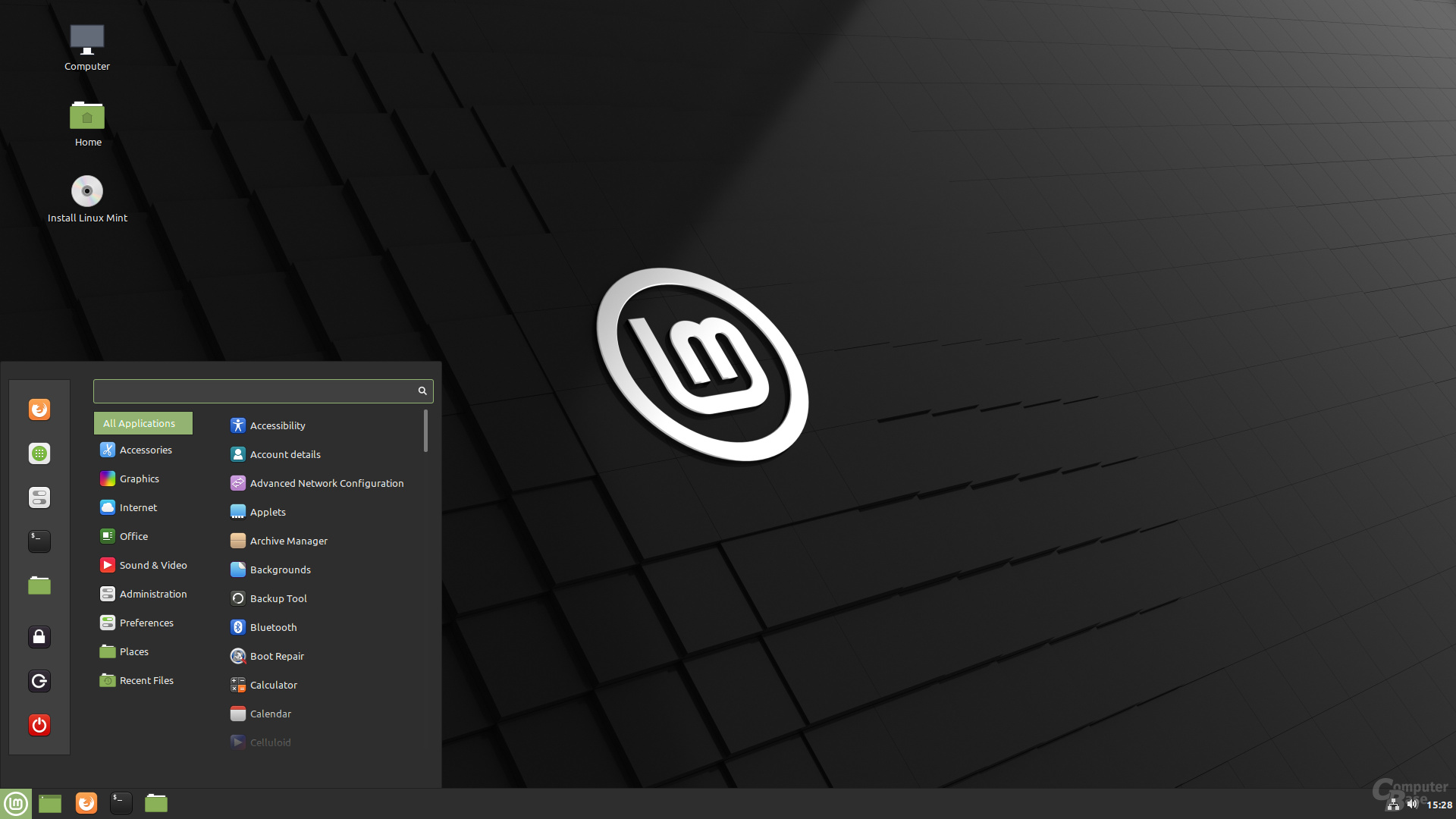 The best-known Ubuntu derivative is Linux Mint
The best-known Ubuntu derivative is Linux Mint Arch Linux
Arch Linux occupies a special position among the major distributions, because the operating system has a reputation for being addressed exclusively to professionals. Not without good reason, as users usually find out when they try to install a pure Arch Linux for the first time.
Beginners should approach the matter with motivation if Arch Linux is to be used for their first attempts at using the free operating system kernel from Linus Torvalds. The OS definitely demands initiative.
The distribution follows the KISS principle (“keep it simple, stupid”), which for the sake of simplicity dispenses with graphical installation and configuration aids. Arch Linux wants to show the user what is happening on his system and not hide these processes behind a graphical user interface.
The package management of Arch Linux, which is designed for binary packages, and all its derivatives the package manager Pacman, specially written for the operating system, takes over. It is the opposite of the Debian Package Manager and its graphical user interface APT.
The corresponding ISO files of the system images can be found on the numerous official Arch Linux mirrors.
The tutorial “How to Install Arch Linux” from the YouTube channel Linux Scope helps the installation.
Arch-Derivate
Arch Linux's offshoots occupy a special position in the derivatives category because they are particularly broad and diverse. Based on Arch Linux, some distributions have established themselves in the huge and highly competitive field of Linux compilations and are bringing the professional operating system more and more into the mainstream.
Arch derivatives are now considered to be the preferred distributions among gamers because, due to their orientation as a rolling release and the associated topicality with regard to the underlying Linux kernel and the available software packages, they often bring the latest drivers and runtime environments with them.
In the meantime, the Belgian distribution ArcoLinux 21.03 has earned a very clear recommendation from chief developer Erik Dubois due to its very active community, countless tutorials and how-tos, as well as its three editions that are equally suitable for beginners and professionals. Just a few hours after a release, new videos are online on the distribution's YouTube channel and the friendly community helps actively via its own Discord channel.
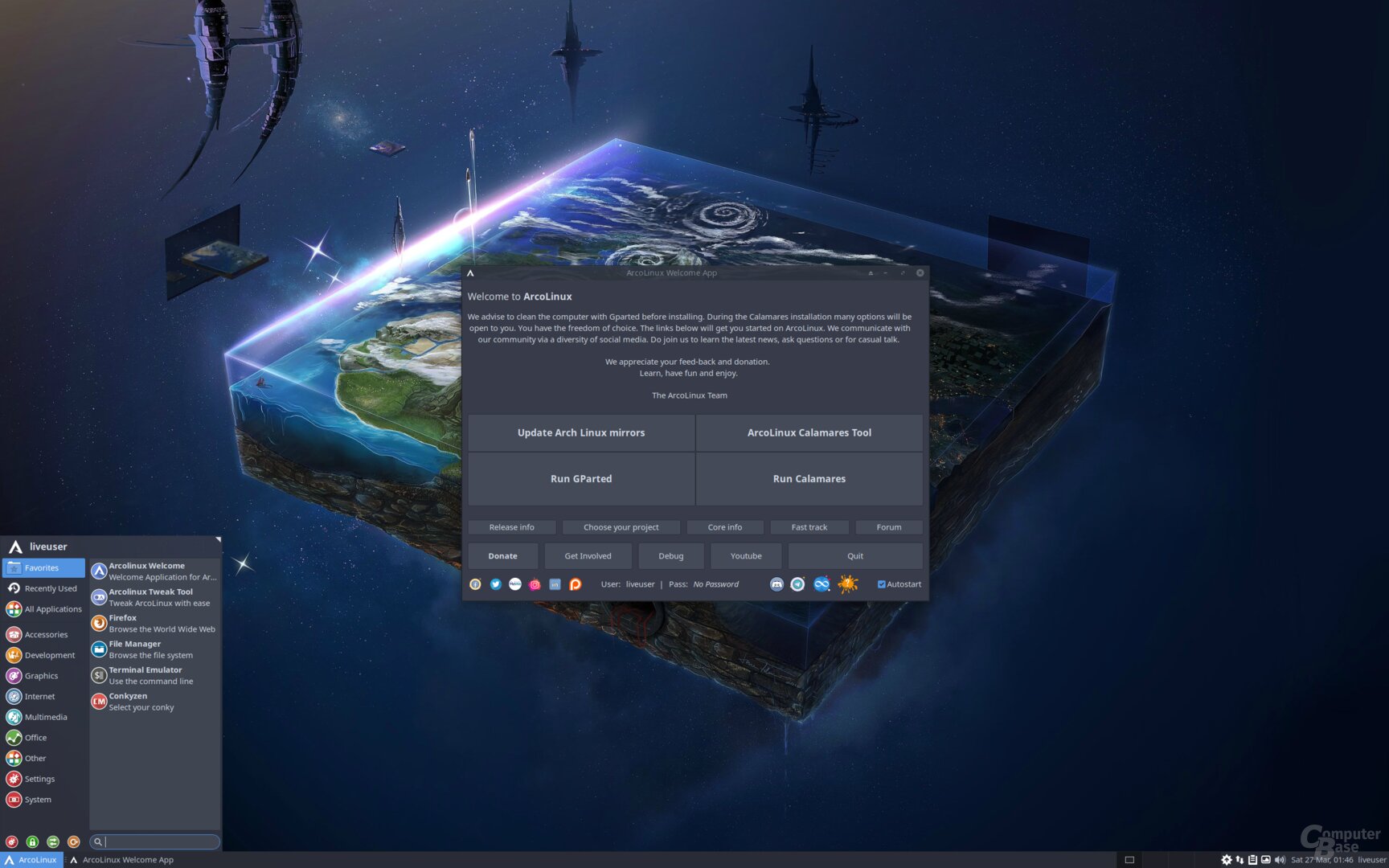 ArcoLinux 21.03 impresses with its active community
ArcoLinux 21.03 impresses with its active community Another Arch derivative that is currently strong is the talk of the town, is the Dutch distribution EndeavorOS 2021.02.03, which is the official successor to Antergos and has won over many users.
EndeavourOS not only comes with the latest software, but also a total of nine desktop environments and, thanks to its easy-to-use Net Installer, is far easier to install and configure than a Vanilla Arch. The desired desktop environment can already be selected during the installation process and the system receives all software, driver and system updates so that no more updates have to be made after installation.
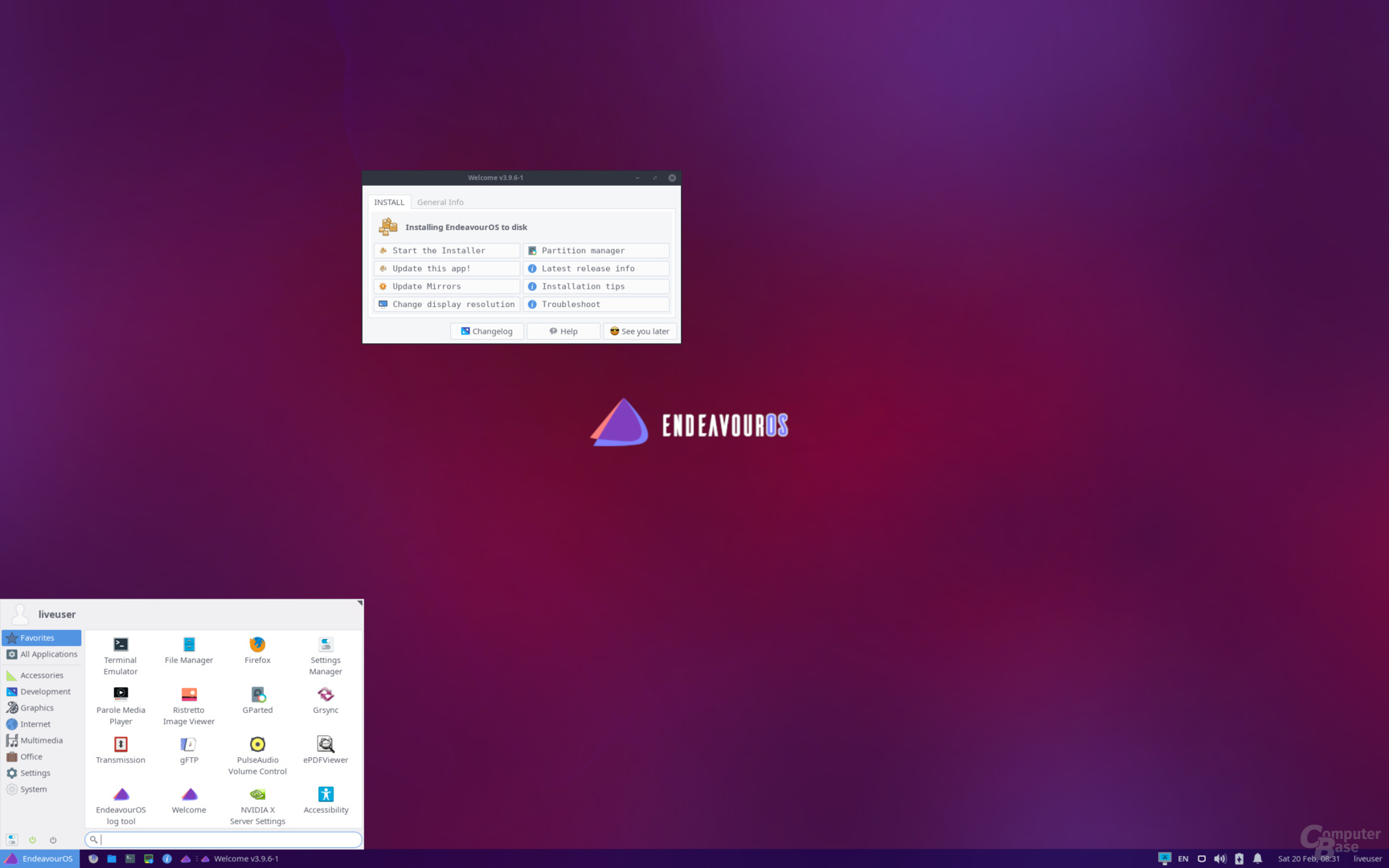 EndeavourOS makes the installation of Arch particularly easy
EndeavourOS makes the installation of Arch particularly easy With ArchLabs, users who prefer Linux pure without desktop and decorations receive a recommended distribution that is inspired by the minimalist models CrunchBang Linux and BunsenLabs, two Debian derivatives that also concentrate on the essentials, and addressed to experienced users who prefer a simple window manager.
 ArchLabs with the window manager Openbox v3 .6.1 after installation
ArchLabs with the window manager Openbox v3 .6.1 after installation In addition to ArcoLinux, EndeavourOS and ArchLabs, RebornOS with its ten desktops and the player-targeted Garuda Linux have recently stood out.
Fedora
The RPM-based Fedora relies on the redesigned desktop in the latest edition, Fedora 34 Gnome 40 and GTK 4 as well as the system kernel Linux 5.12.
Like its predecessors Fedora 32 with Gnome 3.36 (“Gresik”) and Linux 5.6 as well as Fedora 33 with Gnome 3.38 ( “Orbis”) and Linux 5.8 will also appear in Fedora 34 in the editions Fedora 34 Workstation, Fedora 34 Server and Fedora 34 IoT.
 Fedora 34 Workstation with Gnome 40 (Image: Fedora Project)
Fedora 34 Workstation with Gnome 40 (Image: Fedora Project) The development is organized in the online community of the Fedora project, which is supported by the Red Hat company. Fedora is the direct successor to Red Hat Linux and is also ideal as a desktop operating system for everyday use.
Since Fedora is also being developed for general use on server and client systems and has an enterprise background, some users think the distribution is not exactly suitable for Linux beginners, which is what it is today but is no longer the case. Although Fedora brings many of its own tools and on-board resources out of the box, these do not necessarily have to be used and are therefore not essential.
Rather, the Fedora project with Fedora 34 and the integration of the new desktop has achieved a great success. The YouTube channel DistroTube, which specializes in Linux and open source, took a detailed look at Fedora 34 with Gnome 40.
Since the release of Fedora 21 on December 9, 2014, the operating system has been available in three versions, the so-called “flavors”, which are geared towards the workstation, server and cloud subareas. These “flavors” all contain the same tools, libraries and APIs called “bases”, but differ in their configuration and in the software packages based on them. The “workstation” version is used as the desktop operating system.
With Fedora Silverblue, there is also a version with the orientation as a persistent desktop operating system with particularly good support of container-focused work processes to choose from. This version of Fedora Workstation is primarily aimed at the developer community.
Fedora also has a very good reputation among hardware and computer manufacturers, which is why, for example, Lenovo uses ThinkPads Fedora Workstation and ThinkStations are optionally available with Fedora.
Fedora derivatives
Unlike Arch, Debian and Ubuntu, Fedora is traditionally not a distribution that serves as the basis for many derivatives. Nevertheless, there are some offshoots that are based on Fedora.
For example, the Qubes OS operating system, which is primarily focused on IT security and is used by Edward Snowden, among others and data protection and anonymity is guaranteed by isolation, originally from Fedora onwards.
-
 Qubes OS ( Image: Qubes OS)
Qubes OS ( Image: Qubes OS)
Image 1 of 4
 Qubes OS
Qubes OS  The architecture of Qubes OS at a glance – including the VMs and their level of trust
The architecture of Qubes OS at a glance – including the VMs and their level of trust 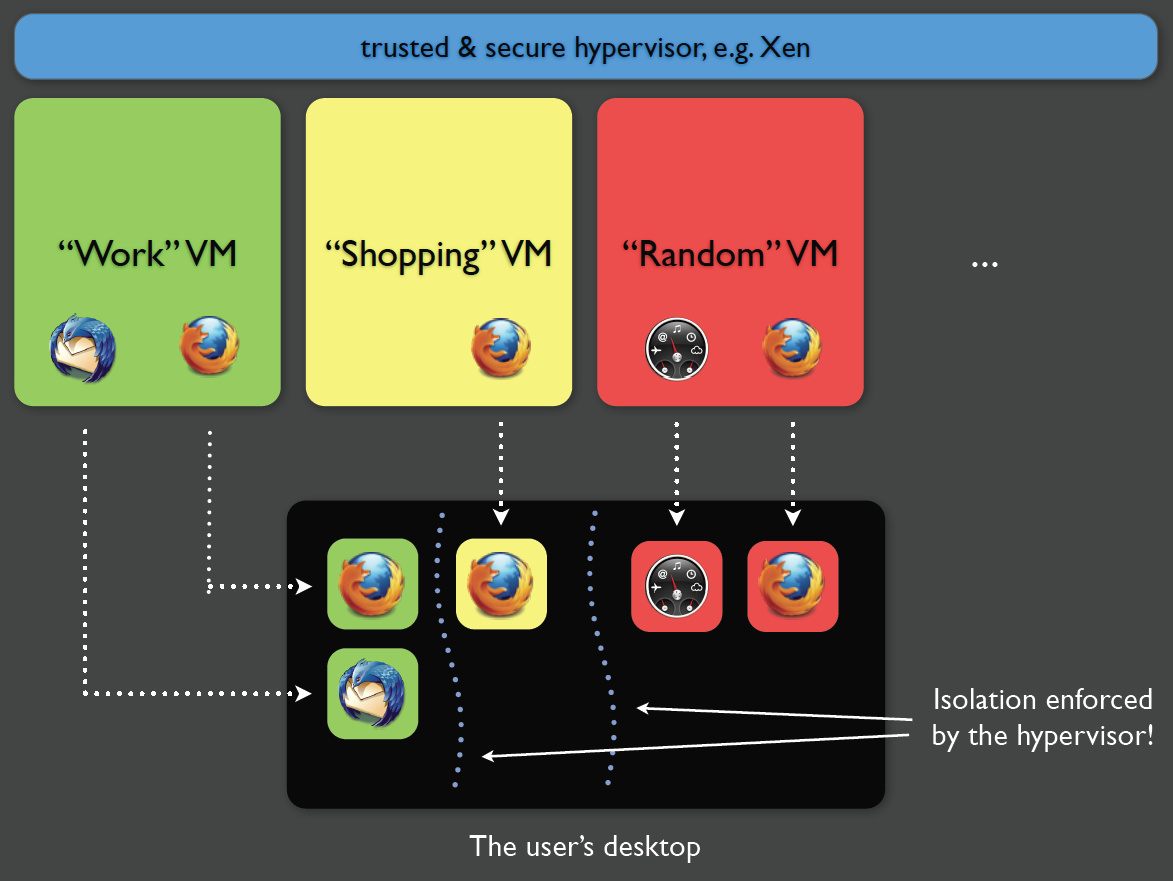 The virtual security domains of Qubes OS
The virtual security domains of Qubes OS  Qubes OS 4.0.3
Qubes OS 4.0.3 Apart from that, Fedora does not appear in our latitudes through an abundance of derivatives and is more successful in Eastern Europe and China as the basis of various operating systems.
Large and small desktop environments
Most preconfigured distributions come with one or all three large free desktop environments. These are the KDE Plasma, Gnome and Xfce desktops.
comfortable desktops
The particularly beginner-friendly distribution Linux Mint appears in three different editions and relies on the in-house desktop Cinnamon, the MATE Desktop Environment and Xfce.
-
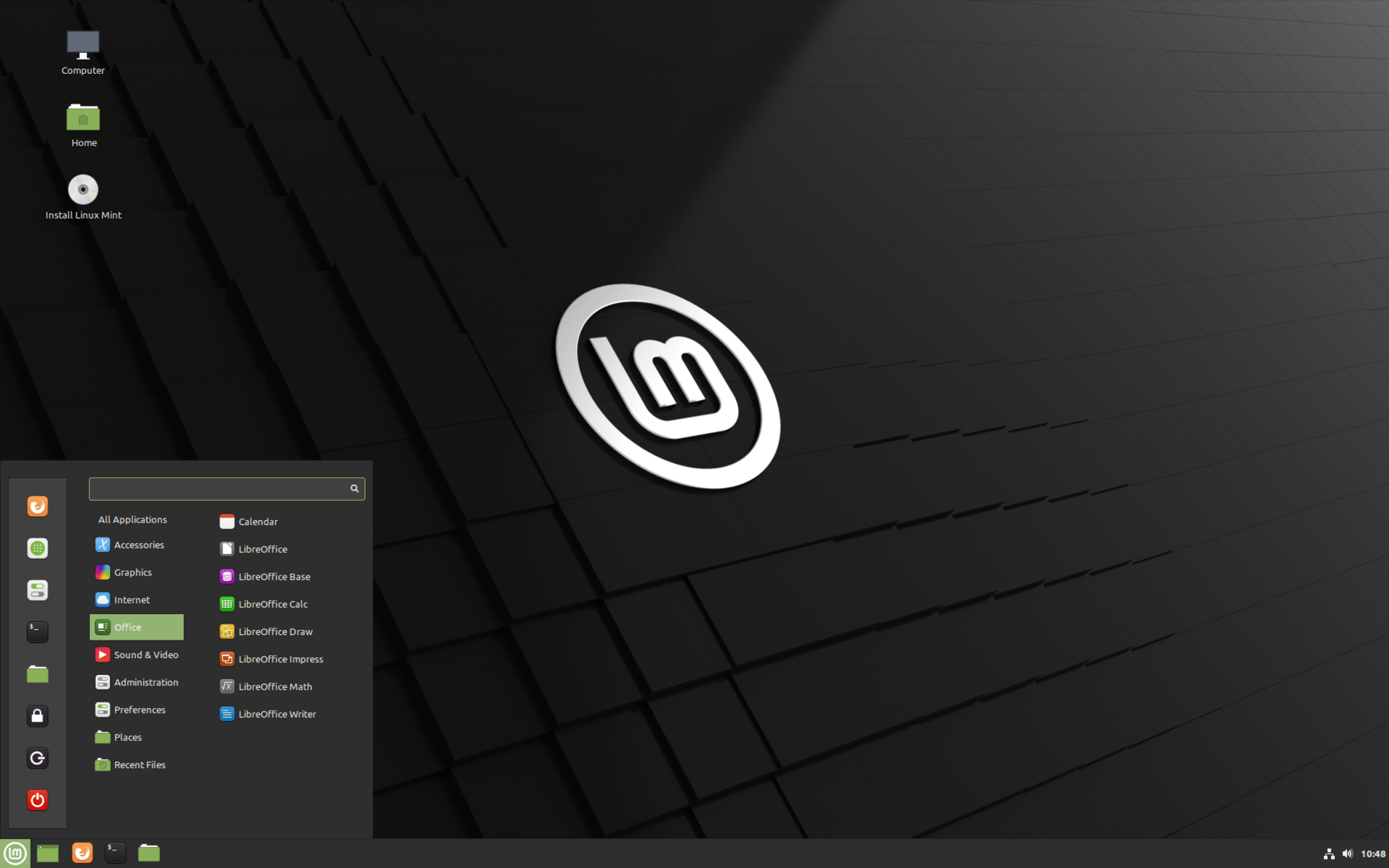 Linux Mint 20.2 (“Uma”) – Cinnamon Edition (Image: Linux Mint)
Linux Mint 20.2 (“Uma”) – Cinnamon Edition (Image: Linux Mint)
Image 1 of 3
 Linux Mint 20.2 (“Uma”) – Cinnamon Edition
Linux Mint 20.2 (“Uma”) – Cinnamon Edition  Linux Mint 20.2 (“Uma”) – MATE Edition
Linux Mint 20.2 (“Uma”) – MATE Edition 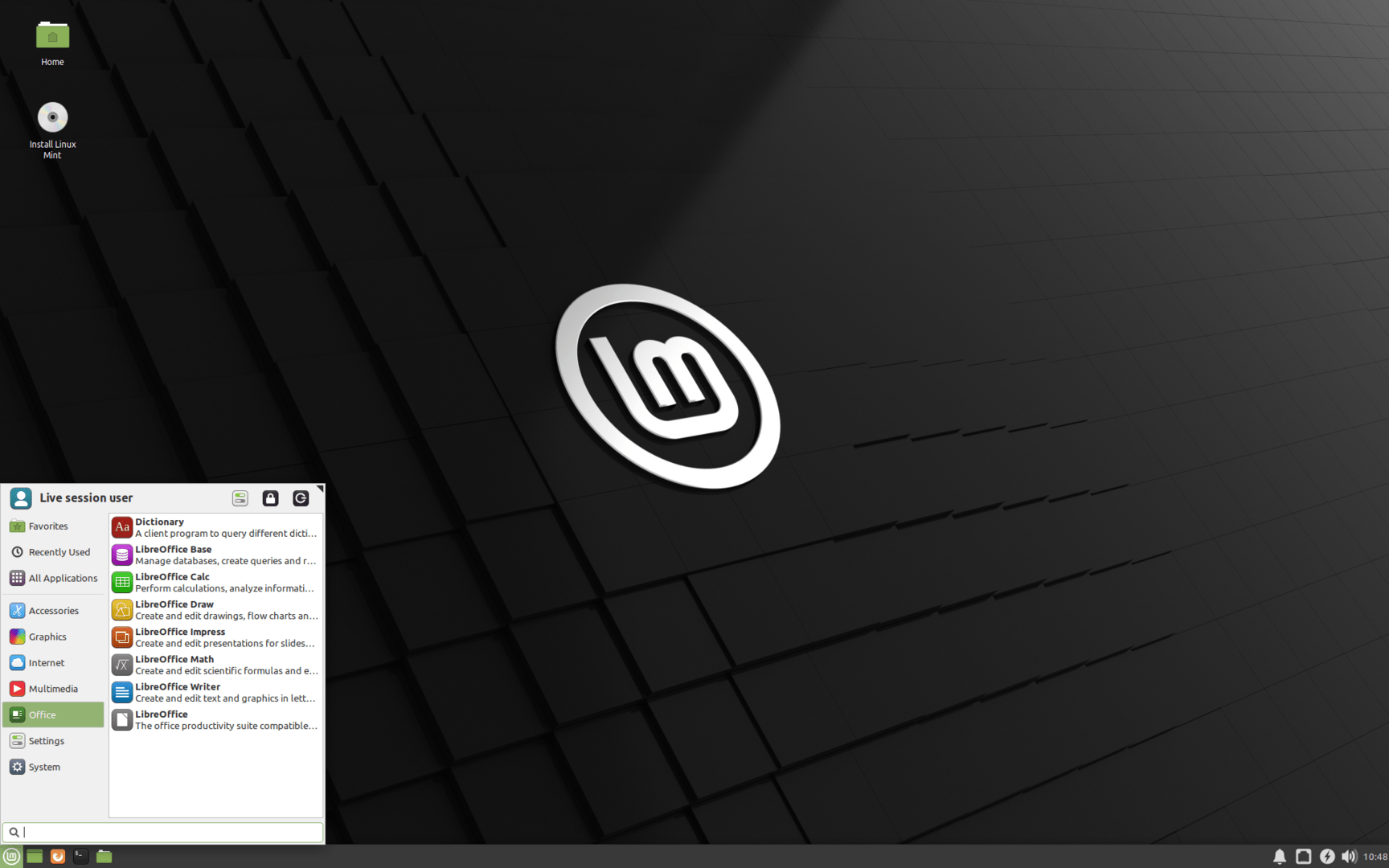 Linux Mint 20.2 (“Uma”) – Xfce Edition
Linux Mint 20.2 (“Uma”) – Xfce Edition In addition to KDE Plasma, Gnome, Xfce and Cinnamon, Deepin, Budgie and LXQt are also frequently encountered working environments under free operating systems based on Linux. The editors have put together a small overview of all popular desktop environments so that even Linux beginners can quickly find their way around.
light window managers
In addition, there are several common window managers, which are usually far more resource-efficient than a full-fledged desktop environment and, last but not least, are often very popular with programmers and administrators. For inexperienced users and Linux beginners, pure window managers are usually not the first choice, since above all convenience functions have to be dispensed with and the console has to be used more often.
How such a window manager works and how to get started is demonstrated once again by the YouTube channel DistroTube using the dynamic window manager Awesome written in C and Lua.
Roughly speaking, the combination of a Linux system kernel and a package management tool with corresponding package sources (“repositories”) as well as a desktop environment or a window manager make up the basic structure of a distribution. But with the multitude of distributions, derivatives and “forks”, many users can no longer see the forest for the trees.
Recommendations
This section serves only as a rough classification of the recommended Linux distributions, which have already been mentioned in the course of this article. Whether beginners prefer to use an Ubuntu with Gnome or the derivative Kubuntu with KDE Plasma based on it is ultimately always a matter of taste.
Three distributions for Linux beginners
Recommendations for Linux beginners: Ubuntu, Linux Mint, PCLinuxOS
Linux beginners and/or Windows users who take their first steps with a Linux-based operating system should look at Ubuntu in particular , Linux Mint and PCLinuxOS take a closer look.
Thanks to their wide distribution and communities, all three distributions enable a quick start, are well documented and yet offer diverse working environments for every taste.
With PCLinuxOS, users get an old-school distribution with new packages that, thanks to their current runtimes, libraries and drivers, are also suitable for playing via Steam, Wine and the Proton API, which is also available on the Zen-2 handheld Valve Steam Deck for Will be used, very well suited.
-
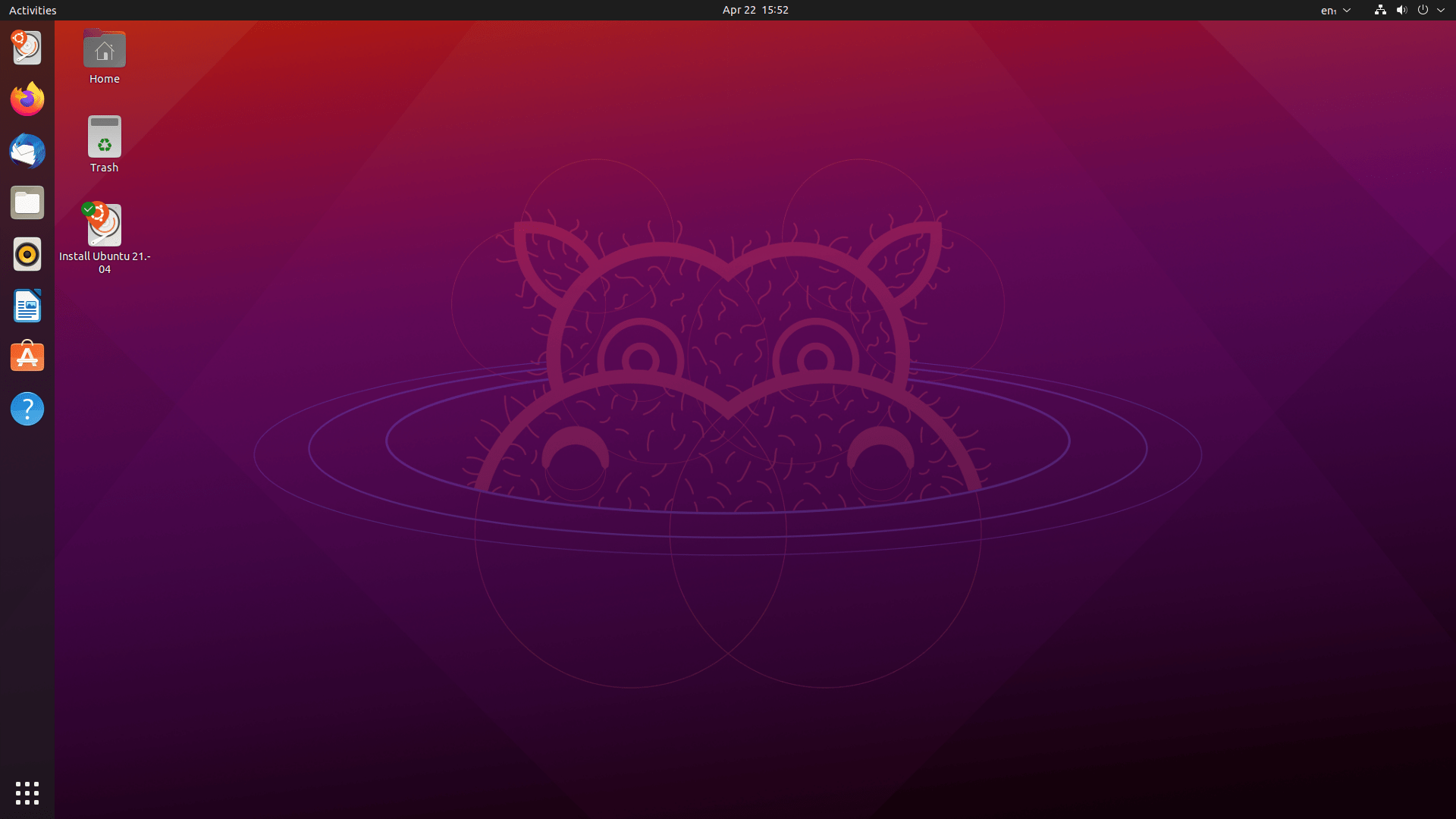 Ubuntu 21.04 (” Hirsute Hippo “) with Gnome 3.38.4 (” Orbis “) (Image: Canonical)
Ubuntu 21.04 (” Hirsute Hippo “) with Gnome 3.38.4 (” Orbis “) (Image: Canonical)
Image 1 of 3
 Ubuntu 21.04 (“Hirsute Hippo”) with Gnome 3.38.4 (“Orbis”)
Ubuntu 21.04 (“Hirsute Hippo”) with Gnome 3.38.4 (“Orbis”)  Linux Mint 20.2 (” Uma “) – Cinnamon Edition
Linux Mint 20.2 (” Uma “) – Cinnamon Edition Three recommendations for ambitious users
Recommendations for ambitious users: EndeavorOS, ArcoLinux, Manjaro
Ambitious and advanced users who would like to delve deeper into the operating system should take a closer look at the Dutch Antergos successor EndeavorOS based on Arch Linux.
Anyone who can easily using the Net-Installer, can already select the desired one of the seven desktop environments during the installation process and also receives a system including all program and system updates that does not require any updates after installation.
Eric Adams' YouTube channel, which specializes in Linux and free software, explains how this works.
The Belgian ArcoLinux, which is also an Arch derivative, which particularly includes and focuses on the community behind the project, can also serve as a basis for advanced Linux users.
The big plus of the distribution, which appears in three editions: the exchange.
In addition to the countless tutorials and how-tos on the official YouTube channel of ArcoLinux developer Erik Dubois, the project's official Discord channel is also a first-class contact point for support and an exchange of ideas.
-
 ArcoLinux v21.03 (Image: ArcoLinux)
ArcoLinux v21.03 (Image: ArcoLinux)
Image 1 of 4
 ArcoLinux v21.03
ArcoLinux v21.03  ArcoLinux v21.03
ArcoLinux v21.03 
 ArcoLinux with Linux 5.10.3
ArcoLinux with Linux 5.10.3 This serves as the third operating system in the group Arch-based Manjaro Linux for many users as a starting point for their very individual system, while minimalists can also use Mabox Linux, a Manjaro derivative with the Openbox window manager.
Four times Linux for professionals and individualists
Recommendations for Linux professionals: Arch Linux, Linux from Scratch, AryaLinux, ArchLabs
Linux professionals and individualists, on the other hand, use an Arch Linux that is fully compiled and tailored to their own system, with one or more full-fledged desktop environments and resource-saving window managers or an individual combination based on Linux from Scratch or Beyong Linux from Scratch (BLFS ).
-
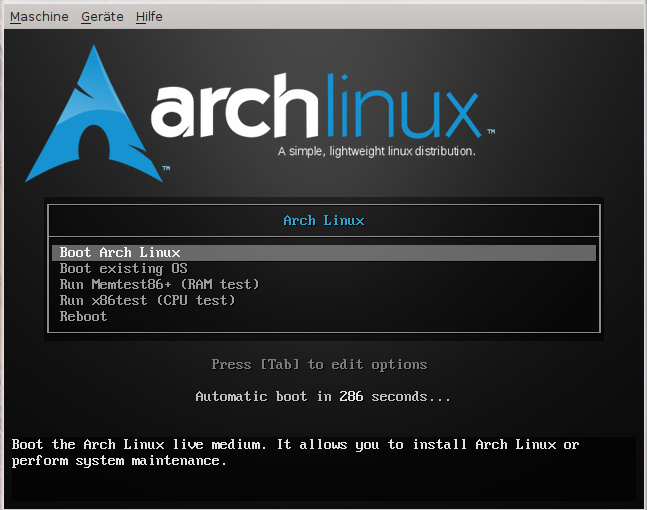 ArchLinux is often the first choice of professionals (Image: Arch Linux)
ArchLinux is often the first choice of professionals (Image: Arch Linux)
Image 1 of 2
 ArchLinux is often the first choice of professionals
ArchLinux is often the first choice of professionals Among the LFS operating systems, AryaLinux (report) made a good first impression for savvy users. Purists, who prefer a pure Linux without a bloated desktop and without superfluous decorations, will be happy with ArchLabs.
 ArchLabs with the window manager Openbox v3.6.1 after the installation (Image: ArchLabs)
ArchLabs with the window manager Openbox v3.6.1 after the installation (Image: ArchLabs) Also recommended
SUSE, Fedora, Solus and Debian
Three other highly recommended distributions, which can also replace any of the aforementioned operating systems and appeal to beginners as well as professionals, are openSUSE Leap and openSUSE Tumbleweed, the French Fedora Workstation and the very versatile Solus.
On the other hand, Debian GNU/Linux, which is considered to be particularly stable, plays a special role, which is always used when maximum stability is required and the latest software packages are not so much in focus.
Last but not least, it should be noted that users with the appropriate knowledge, the appropriate package management and the associated sources and tools can build the” Linux “of their wishes from almost any base. What is very different are the tools provided.
Experienced users and professionals ultimately have the freedom to adapt almost any distribution of their choice according to their own personal wishes.
As is so often the case with Linux and Open Source, the same applies here: Who the Choice is spoiled for choice!
Survey on the topic
Do you use a Linux-based operating system?
The editors are looking forward to finding out who from the ComputerBase Forum community is using Linux and if so, in what form.
Do you use an operating system based on Linux?
- Yes, I use Linux privately
- Yes, I use Linux professionally
- Yes, I use Linux privately and professionally
- No, I do not use Linux privately or professionally
- Abstain (show result)
Please log in to vote!
In the second part of this series “Linux Basics 2.0: Working and Playing under Linux” the editors will give practical tips on working and playing with free operating systems and will show possible alternatives to Windows.
This article was interesting, helpful, or both? The editors appreciate every support from ComputerBase Pro and deactivated ad blockers. More about advertisements on ComputerBase.